Calf compressors (sometimes called compression sleeves) are like compression socks, but without coverage of the foot.
The best calf compression sleeve will be one that applies firm but gentle pressure to the legs and is made of a durable, breathable fabric.
Calf compressors can be a great alternative to closed-toe compression socks.
In this article we will cover:
- What calf compressors are.
- Features to look for when buying calf compressors.
- Finding the best types of calf compressors.
If you’ve been told by your doctor or physical therapist that compression sleeves may help with a problem you are experiencing, this article will be a great resource to learn more.
We’ll also be taking a look at how calf compression could improve your athletic performance.
What Are Calf Compressors?
Calf Compressors are sleeves of stretchy, durable and breathable fabric designed to wrap tightly around your calves.
The tightness provides support to your muscles and circulatory system so they can do their job with less effort.
The type of compression offered varies from product to product and is based on if you are choosing compression sleeves for medical reasons or athletic aspirations.
For example, there are pressure sleeves that offer graduated compression. This type of compression garment is designed so the calf compressors will be tightest around the ankles and have the least pressure towards the knee. The function of this design is to provide additional stability to the ankle, which is susceptible to twists and sprains during activities like running.
You may also find calf compressors that are designed to tackle medical problems. As you shop for compression garments, you’ll see there are countless aesthetic options; a wide range of colors, designs and brands are available.
The Difference Between Calf Compressors and Compression Socks
The primary difference between compression sleeves (calf compressors) and compression socks is :
-Compression sleeves end at or near the ankle.
-Compression socks cover the foot as well as the leg.
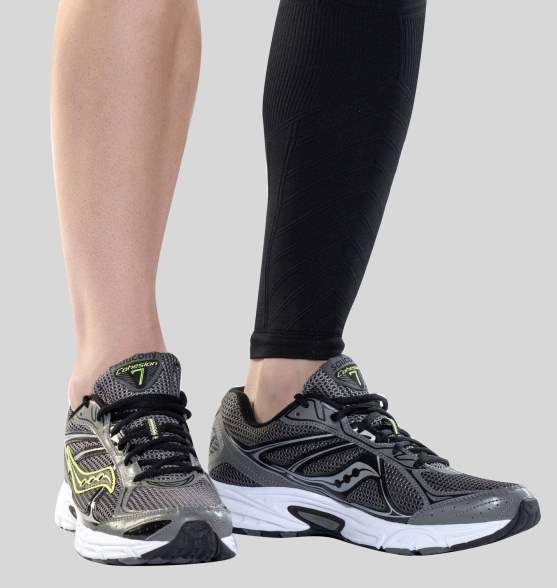
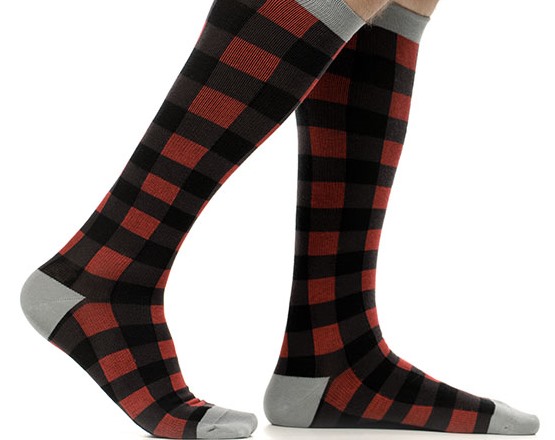
Is there a clear benefit to having one form of compression garment over the other? It depends. First ask yourself what your motivation is for buying a compression sock or sleeve. Whatever need you have, there is likely a compression garment out there to meet that unique need.
You should also explore what each product feels like and whether you prefer one over the other. It really comes down to your comfort, and as long as the pressure rating of the garment matches the needs of your body, both compression sleeves and compression socks can work. Some people really like the foot support provided by compression socks, others prefer the open foot of a pressure sleeve.
Let’s consider the benefits of compression sleeves.
The Benefits of Compression Sleeves
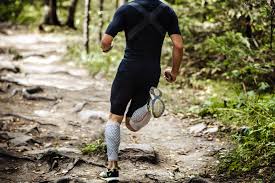
There are many clear benefits to wearing calf compressors, including improved athletic performance and the management of serious medical issues.
You’ve probably heard about the benefits of compression sleeves before and may have even seen one of your favorite athletes wearing them. When you are done with this article, you will see that pressure sleeves are more than just a fashion accessory for the gym, they provide comfort and can improve your health.
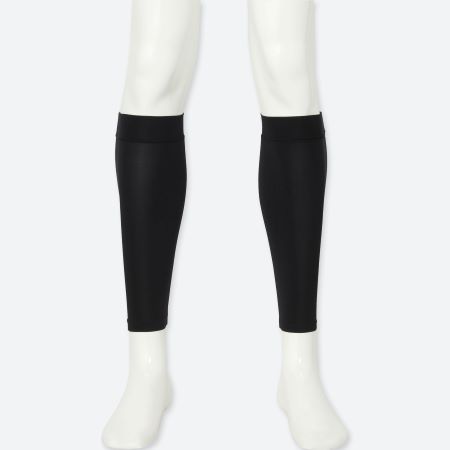
1. Pressure Sleeves Enhance Blood Flow.
Pressure sleeves are an excellent tool for enhancing circulation. Sufficient blood flow is crucial to healthy legs and to achieving peak performance as an athlete.
When your circulatory system is struggling to do its job, the veins, legs, heart and lungs all suffer. Calf compressors provide structural support to a part of your extremities that demand a lot of blood and see extensive use every day. By improving blood flow in your calves, you can improve muscle performance and your overall health.
2. Calf Compressors Limit the Buildup of Lactic Acid and Other Waste Products.
Lactic acid buildup is one of the main sources of muscle soreness after exercise and workouts. But increased blood circulation can assist in flushing lactic acid out of your leg muscles as well as other wastes that accumulate post workout.
By reducing lactic acid buildup, you will experience less intense soreness and your discomfort will not last for as long. As a result, you’ll be able to spend less time recovering between workouts.
For many people, discomfort after working out can be extremely discouraging, leading to delayed exercise or even losing momentum in your physical fitness journey. Compression sleeves can help you avoid that unnecessary soreness.
3. Pressure Sleeves Prevent Excessive Movement of Calf Muscles.
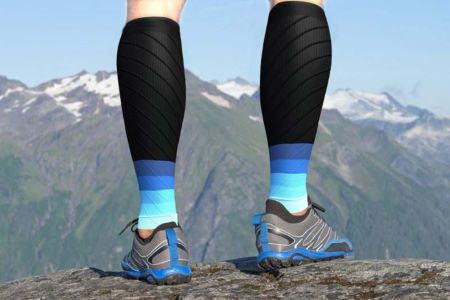
Each time your foot hits the ground as you run, your entire body feels it. Your muscles react quickly to stabilize your core and keep you upright and moving forward. These reactions may seem small, but over time, this process uses a lot of energy and contributes to fatigue.
Compression sleeves go a long way in assisting your body with this task. The calf compressors serve as a strengthening aid, giving your lower legs an extra boost of energy.
As a side note for trail runners, in addition to all the benefits above, compression sleeves can shield your legs from dirt, scrapes and rocks.
The excessive strain on the muscles during shock absorption can also lead to shin splints and swelling. Calf compressors are a popular option for warding off these issues and increasing blood flow to the injured site to speed recovery.
Calf Compressors Offer All of These Benefits and More
These are just a few of the primary benefits calf compressors offer. There are other benefits as well in regards to managing medical issues. If you have questions about using compression sleeves for medical support, ask your doctor.
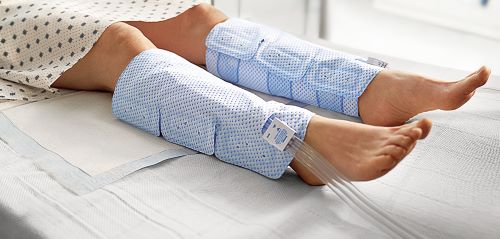
Now that you are aware of the benefits of pressure sleeves, let’s review how to pick the best pair for you. We will be discussing which three essential things you need to look for in a good set of calf compressors.
What to Look for in Calf Compressors
Three important features to check for are:
- Fit: Good calf compressors provide an adequate amount of support without being too tight. You can find light support or prescription-strength pressure sleeves by reading the pressure rating listed on the label. Check the labels thoroughly. There are a series of sizes and options for unisex, men’s and women’s. Overall, be sure that you are shopping for a fit that meets your specific needs, whether they are athletic, medical or both.
- Fabric: Compression sleeves come in a variety of materials made for specific activities and treatments. Some of these socks have silicone taping along the inner edges for additional support. Some are lighter and offer more breathability. If you are planning to run in your calf compressors, choose a pair that provides moisture-wicking properties and is made of anti-microbial fabric. A more technical material might be required if your are worried about a condition like shin splints.
- Style: Finally, there is a universe of style options. You will definitely be able to find a calf compressor with prints and colors that suit your personality. Many brands offer a series of patterns and prints made with function in mind, helping you to fight fatigue. And if you aren’t sure what to buy, simple black compression fabrics are always in style.
Now, let’s take a look at five types of pressure sleeves you can choose from.
Five Types of Calf Compressors You Should Consider Buying
Our goal here is not to mention any specific brand, but to highlight the types of calf compressors that we think demonstrate some of the best options on the market. We are going to examine five different models that have been honestly reviewed by wearers so you can trust them.
1. Basic 20-30 mmHg Calf Compressors.
As you search for the best pair of calf compression sleeves, look for models that are designed to provide mild or moderate compression (unless otherwise prescribed by your doctor). You’ll typically find calf compression sleeves with a pressure rating of 20-30mmHg available over-the-counter.
This popular pressure rating can help you limit micro-traumas to the legs as you participate in sports or workouts. They are often unisex, though they may come in varying sizes based on shoe size so buyers can get an optimal fit.
Compression sleeves for the lower legs will be composed of a mix of nylon and elastane and are available in a variety of colors. They’re designed with a top band that sits just below the knee to keep the sleeve in place as you run.
Users who’ve bought 20-30mmHg calf compressors have consistently reported they help in resolving existing sprain and shin splints while preventing further complications. If you are looking for calf compressors that will help you run for miles, these are a great place to start.
2. Sports Calf Compressors.
Often times, calf compressors tagged as sports compression sleeves will come with a lower price. That doesn’t mean they are lower quality, rather the price reflects their non-medical status.
These types of compression sleeves are more stretchy and breathable, but still firm enough to compress and support the calves. They are designed in a variety of colors.
Users that have purchased sports calf compressors tend to enjoy the slim profile they give their legs. These sporty compressors deliver solid performance if you choose a pair made of quality materials. They can also help in limiting varicose vein formation, keep you on the track longer and reduce nerve pain in your feet and calves.
3. Calf Sleeves for Fashion.
If you are into fashion, searching for calf compressors with the best designs or this season’s colors may be a top concern.
While pressure sleeves are excellent for shin splints and leg cramps, they are also loved for their colorful and fun designs. If you want to stand out from the crowd during your next race, grab yourself a pair of brightly colored calf compressors.
Fun pressure sleeves can also motivate you to get up in the early morning and run. It’s like sharing your personality whenever you’re out wearing them.
The styles available now are truly amazing and entertaining. From ice cream cones to the Statue of Liberty, we’re not kidding when we say there is something for everyone.
These are typically designed with 10% spandex and 90% nylon. Calf compressors with fun prints are quite supportive and often provide a moisture-wicking effect for maximum comfort throughout your workout.
The composition of the fabric can vary depending on the brand of fashion-forward compression sleeves. Just to be safe, ComproGear recommends measuring your calves to get the best fit.
4. Calf Compressors with Guards.
Although these sleeves look different from the compression garments we discussed earlier, they work similarly. Calf compression sleeves are designed to be worn during your workout, not after. They still provide support to the leg in the same way other pressure sleeves do.
Compression sleeves with guards come in different sizes, so be sure to measure your calves and choose a size accordingly.
You may notice they are thinners than other compression sleeves. This is because their primary purpose is to provide mild compression with lots of breathability. A thicker fabric would not be ideal for this purpose. You’ll find they are often made of lycra.
Calf sleeves with guards have flat lock seams on the top and bottom to limit chafing and enhance airflow. Also, they are made of an antibacterial fabric that has moisture-wicking abilities, ideal for pulling sweat away from the skin during a race. This also prevents the formation of odors.
It’s possible to hand wash the socks or machine wash them in cold water, making them simple to clean and maintain. Be sure to hang them to dry, though, as the heat of a dryer will damage the sock.
5. Ankle and Calf Sleeves.
If you are suffering from plantar fasciitis or ankle pain, you can try calf sleeves that fold down to cover and support the ankle and midfoot.
Calf sleeves with ankle compression provide extra support. They are excellent for anyone battling with foot pain, as they feature a unfoldable cuff for additional compression at the ankle and arch of the foot. Some users have even found them helpful in managing symptoms of illness in the calf region, the foot and the plantar fascia.
Other Articles Related to Compression Socks
- Sock Soothers
- Compression Sleeves for Legs
- Wide Calf Compression Socks
- Compression Socks for Men
- Medical Compression Socks
- Best Compression Socks for Swelling
- Best Compression Socks for Ankle Swelling
- Toeless Compression Socks
- Do Compression Socks Help Gout
- Easy To Put On Compression Socks for Elderly
- Can You Wear Compression Stockings 24 Hours a Day
Calf Compressors Have Something for Everyone
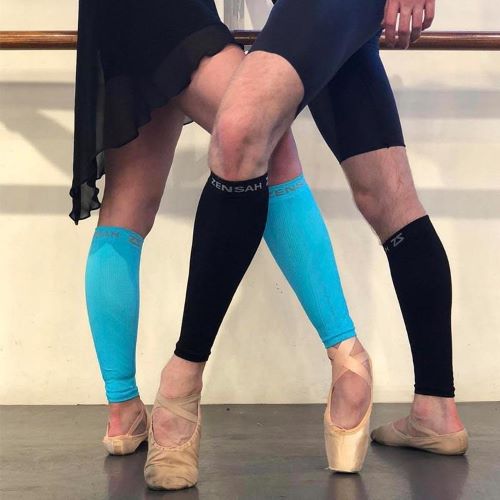
Calf compressors are an excellent addition to anyone’s workout routine. Whether your goal is to improve your athletic performance, eliminate a medical issue in your legs or to spice up your workout with a new look, calf compressors are a great way to go.
There are a whole host of benefits that calf sleeves bring, improving your overall health and helping you become a better athlete. We highly recommend these supportive and comfortable products. Discuss compression sleeves with your doctor if you are unsure how to use them with your condition.
In the end, calf compression offers something for everyone. There are a ton of options out there so consider trying them out for yourself.
